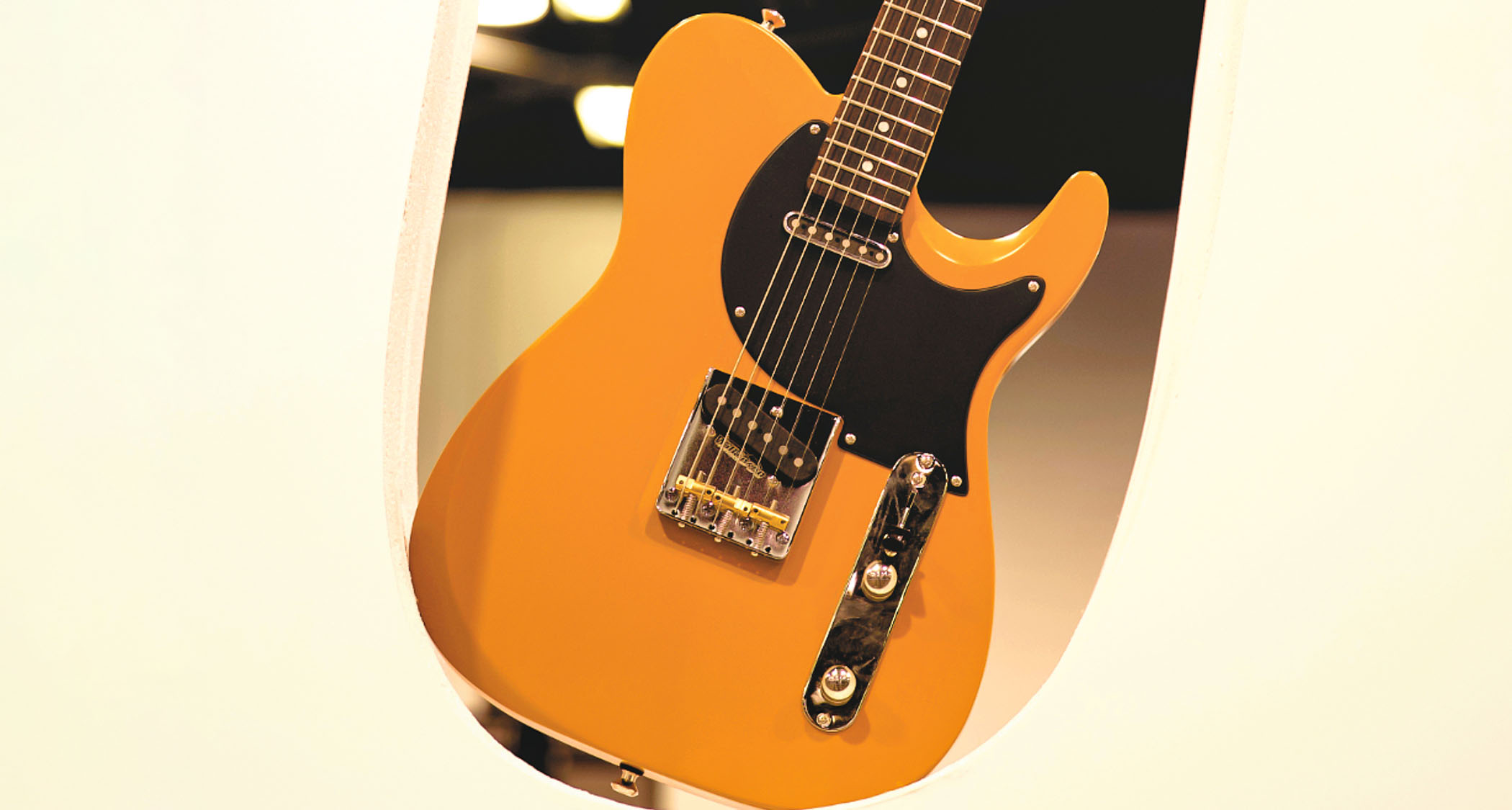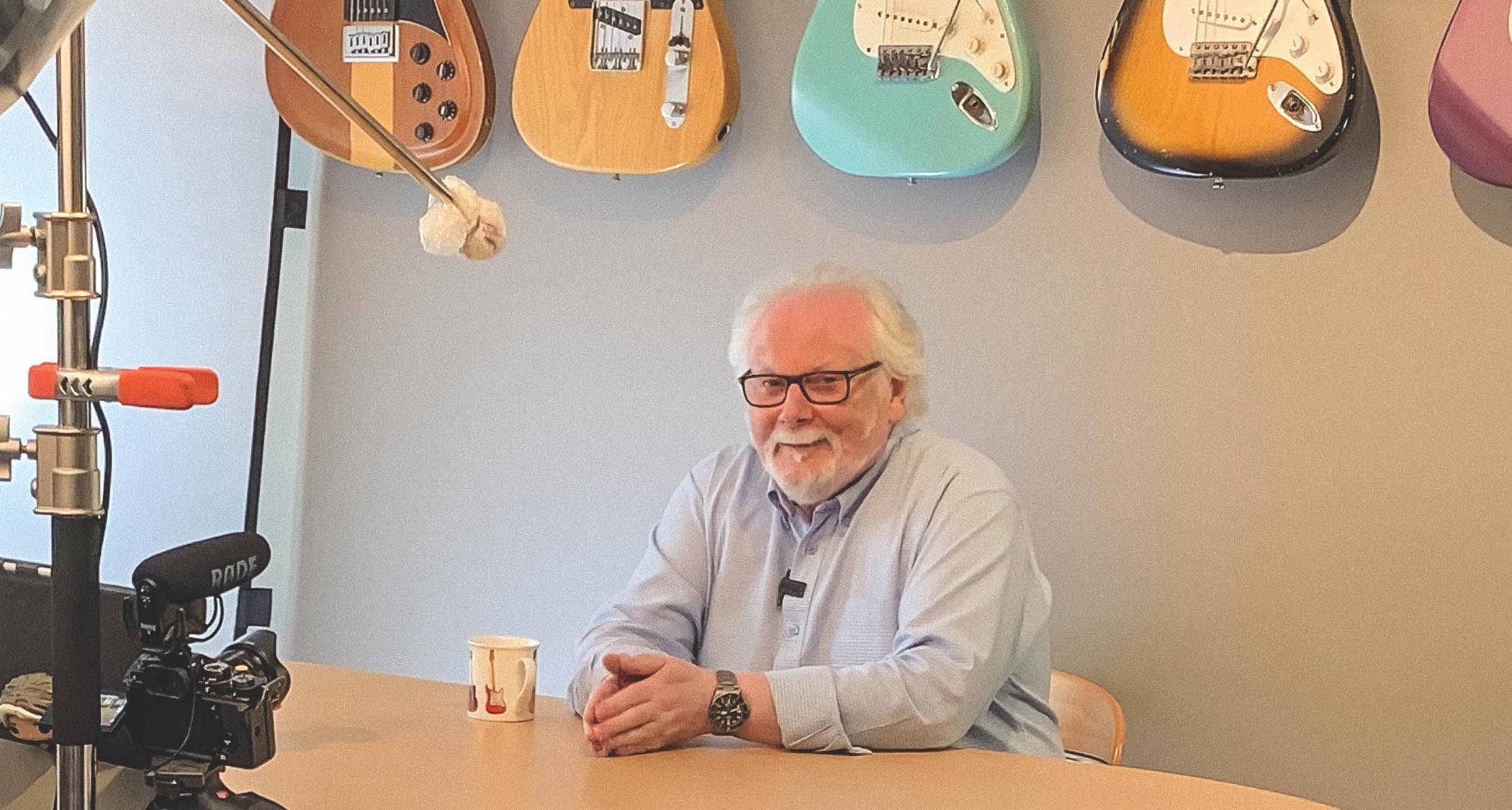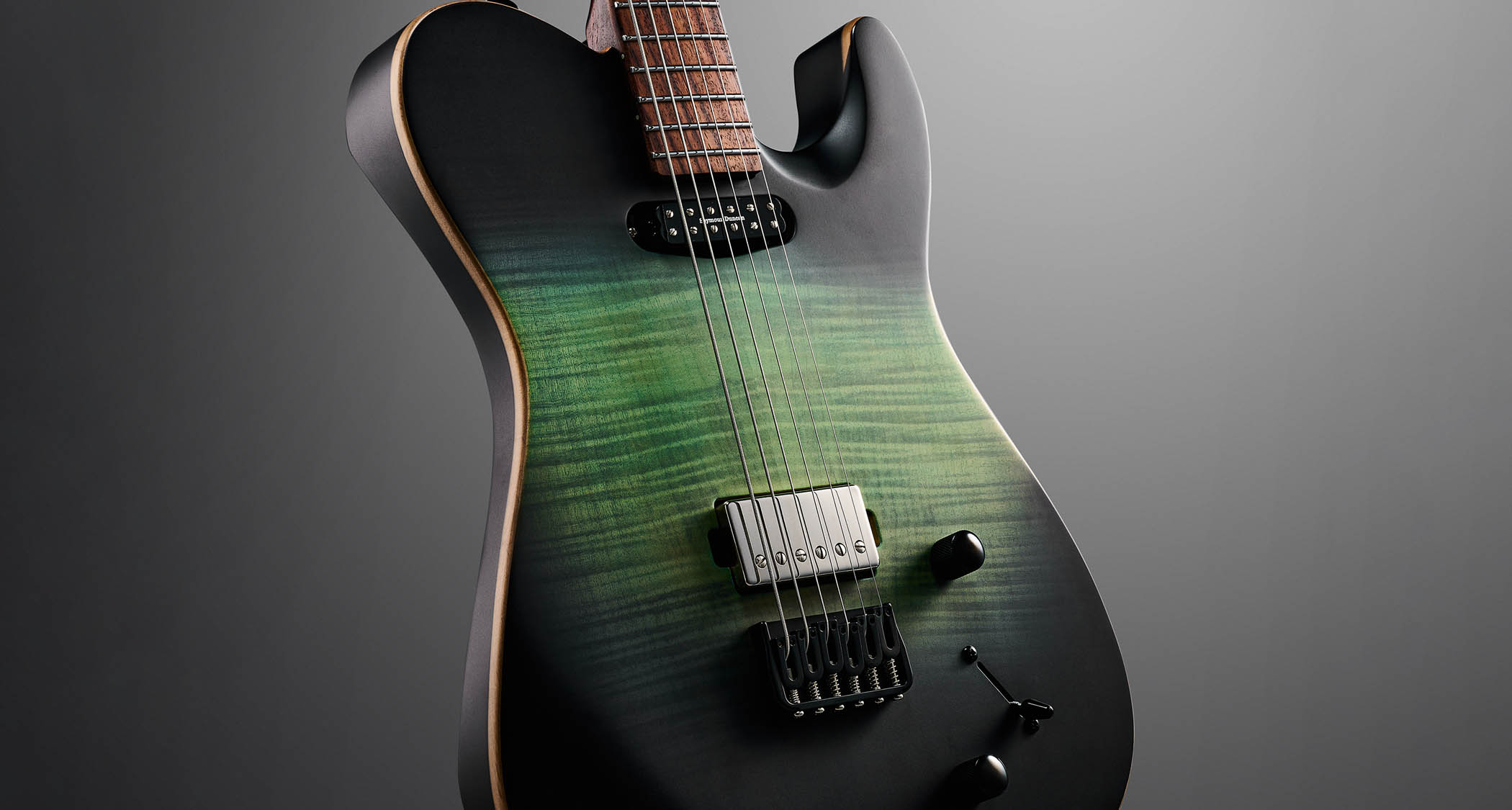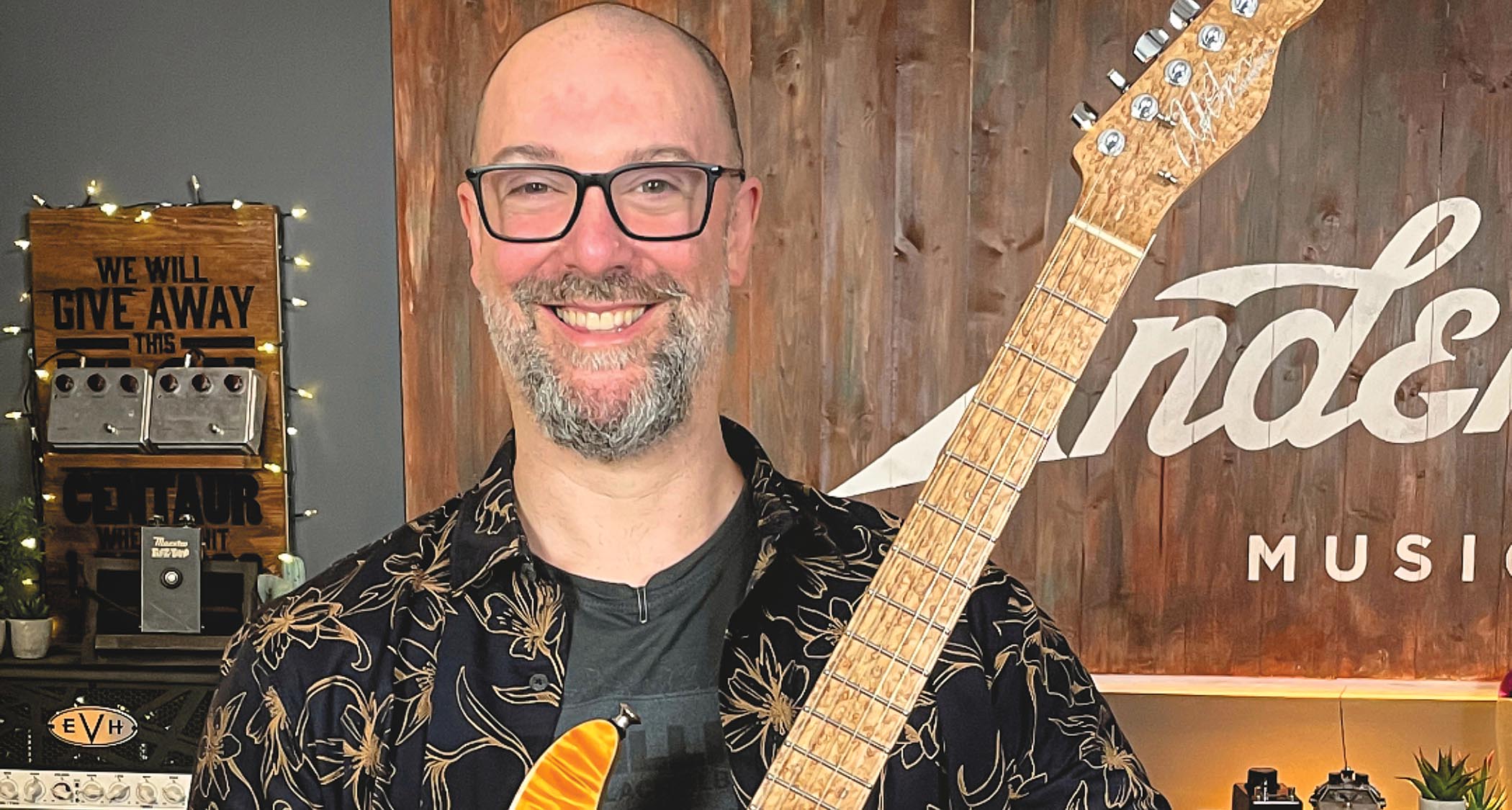“It was the best Fender-style neck I’d seen outside of the Custom Shop. This was the neck I’d been trying to get made all these years”: How Chapman Guitars reinvented itself with a new factory, fresh ideas and the help of industry guru Trevor Wilkinson
Teaming up with Harmony Musical Instruments in India to make their guitars, Rob Chapman's brand is ushering in a new era – and it has Trevor Wilkinson on-call as consultant

Not for the first time, part of this story starts with the legendary guitar hardware designer Trev Wilkinson. Just before Covid, Trev had shown us some DIY guitar kits that were a serious level up from the cheapos that seem to flood the market. It turns out they were being made in India by Harmony Musical Instruments (not to be confused with the Harmony guitar brand) and proved hugely impressive in their quality and detail.
“I’d been at the NAMM Show,” remembers Trev, who was actually hard at work at the Indian factory when we called, “and Harmony’s CEO, Shankar Swamy, and [works manager] Pushpalingam Chithirai put a Fender-style neck in my hands and it was the best proper Fender-style neck I’d seen outside of the Fender Custom Shop.
“This was the neck I’d been trying to get made all these years in all these different factories. That directly led to those guitar kits, which I know you’re very familiar with.”
Harmony Musical Instruments (HMI) is based in Chennai, formerly Madras, and had already been very active in the worldwide guitar-making scene, creating instruments for the likes of Squier and Jackson in considerable numbers, Trev tells us.
But when that ended Trev began his working relationship with the factory by bringing in the much smaller production of Fret-King guitars for JHS, for whom he was consulting at the time. And when that, too, came to an end he began consulting for HMI.

“Dave Hollingworth creates the designs for Chapman in the UK, and I’m in the UK most of the time," says Trev. "We have a very direct line of communication for questions, suggestions – all kinds of stuff.”
“Trev is awesome and the reason we have now moved to Harmony,” confirms Chapman founder, Rob Chapman, emailing us from Malta where he lives.
Get The Pick Newsletter
All the latest guitar news, interviews, lessons, reviews, deals and more, direct to your inbox!
“I’ve worked with Trev for absolutely years: our first ever model featured Wilkinson parts and we’ve always used Wilkinson parts in our lineups. And now we have moved all of our production to Harmony: the quality is fantastic and the people are exceptional, under Trev’s watchful eye, of course! It was a bit of a no-brainer for us.”
At the same time, the Chapman company, which has built up an impressive and quite large range of well-received guitars, was considering its next move in what is a very different market post-Covid.

UK-based Daniel Orchard, Chapman’s international sales and marketing manager, explains: “When I first started working for Chapman about two-and-a-half years ago, the Chapman SKU [stock keeping unit] count was over 120 because Rob wanted every single kind of variant under the sun. So the move to the new factory has effectively given us a bit more control.
“The first production guitars out of India are basically the Chris Robertson SAR63, Peter Honoré DPT, Ghost Fret Classic, Stix & Starrs Pegasus, Law Maker Legacy Baritone and the standard Law Maker Legacy.”
The Name Game

If you’ve been a fan of Chapman guitars for a while, another change comes with the naming conventions: Ghost Fret and Law Maker, rather than ML-1 and the like.
“We were chatting just after I’d joined the company,” remembers Daniel, “and I asked Rob, ‘What does ML standard for?’ I didn’t know. He said, ‘Oh, it stands for Monkey Lord,’ the old nickname he had.
“He’d always wanted to name the guitars, to give them personalities, but because of the history there had never been an opportunity to name these things until a new shape came out, like the Ghost Fret. The [introduction of the] new factory became an ideal time to change things. We all agreed we didn’t want to invent a name, like Telecaster or Stratocaster – our names had to mean something [new]. We also knew we wanted to have simple names.”
“Daniel came up with the idea for fighter pilot ‘call signs’,” says Rob, “and we all thought that was rather fun, so we voted on a whole load of names internally. The ML3 [on which the guitar is based] was arguably our best-selling guitar, it was becoming our ‘Black Strat’, so we thought Law Maker was a Wild West sheriff who was on the right side of the law but a bit of a rogue as well.
“There was a set of rules we were following in terms of traditional guitar making, but then we started playing by our own rules within the confines of the law – we never broke the law,” he laughs. “It is our centrepiece. So we thought it was a cool name, both internally and for the consumer.”

“Every guitar has a sort of sub product-number definer,” Rob continues. “So previously we had the T-style ML3 Traditional, Classic or Modern – a category name, if you like, after the model number or latterly name. In the case of the ML3, they’re all variations on the T-style theme. We design the guitars to fit that name.
“So with the Classic, whatever model it is, our audience knows that it will come with PAF-style pickups and a wrapover bridge. With Legacy, it’s a framework to design to, a set of criteria.
“When Rabea [Massaad] left us [he’s now a Ernie Ball signature artist], his ML3 signature was one of our biggest-selling guitars and we wanted to see if it was because of Rabea’s name, the spec of the guitar or indeed the price point. So the Law Maker Legacy is almost there as a tip of the cap to who we were as a brand, what we were doing.
“Legacy didn’t just come about because of Rabea; it refers to a throwback design. But it is a nod to Rabea: he is, and always will be, part of the Chapman family.”
Earlier in 2024, the company released a small run of UK-made Peter Honoré DPT guitars. So are UK-made guitars still a part of the Chapman plan?
“We were using PJD Guitars, not only to produce a limited number of guitars but for prototyping here in the UK,” says Rob.
“At the moment I don’t know what the future holds for that… but what is more likely is that when we start working on the next Pete Honoré model from India, with Pete being as picky as he is, we’ll probably prototype again with PJD so he can be as hands-on as he was with the DPT. Then, as PJD will have effectively tooled up to make the prototype, we could easily do another small UK run.”
New names, new designs and a new factory. Time to reevaluate Chapman Guitars? We think so.
- For more details, head over to Chapman Guitars.

Dave Burrluck is one of the world’s most experienced guitar journalists, who started writing back in the '80s for International Musician and Recording World, co-founded The Guitar Magazine and has been the Gear Reviews Editor of Guitarist magazine for the past two decades. Along the way, Dave has been the sole author of The PRS Guitar Book and The Player's Guide to Guitar Maintenance as well as contributing to numerous other books on the electric guitar. Dave is an active gigging and recording musician and still finds time to make, repair and mod guitars, not least for Guitarist’s The Mod Squad.
“What blew me away was that everyone wanted the curly maple top. People were calling, saying, ‘I’ve got to have the bird inlays’”: Paul Reed Smith on raising the Standard 24, finally cracking the noise-free guitar and why John Sykes is a tone hero
“Among the most sought-after of all rhythm guitars… a power and projection unsurpassed by any other archtop”: Stromberg has made a long-awaited comeback, and we got our hands on its new Master 400 – a holy grail archtop with a price to match











